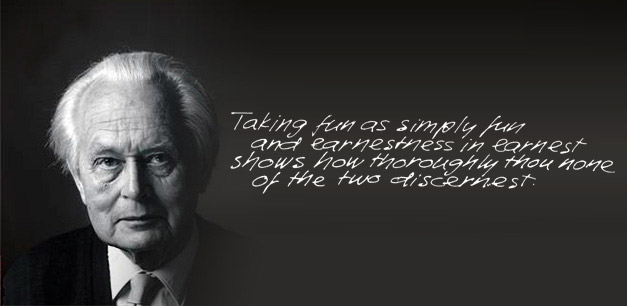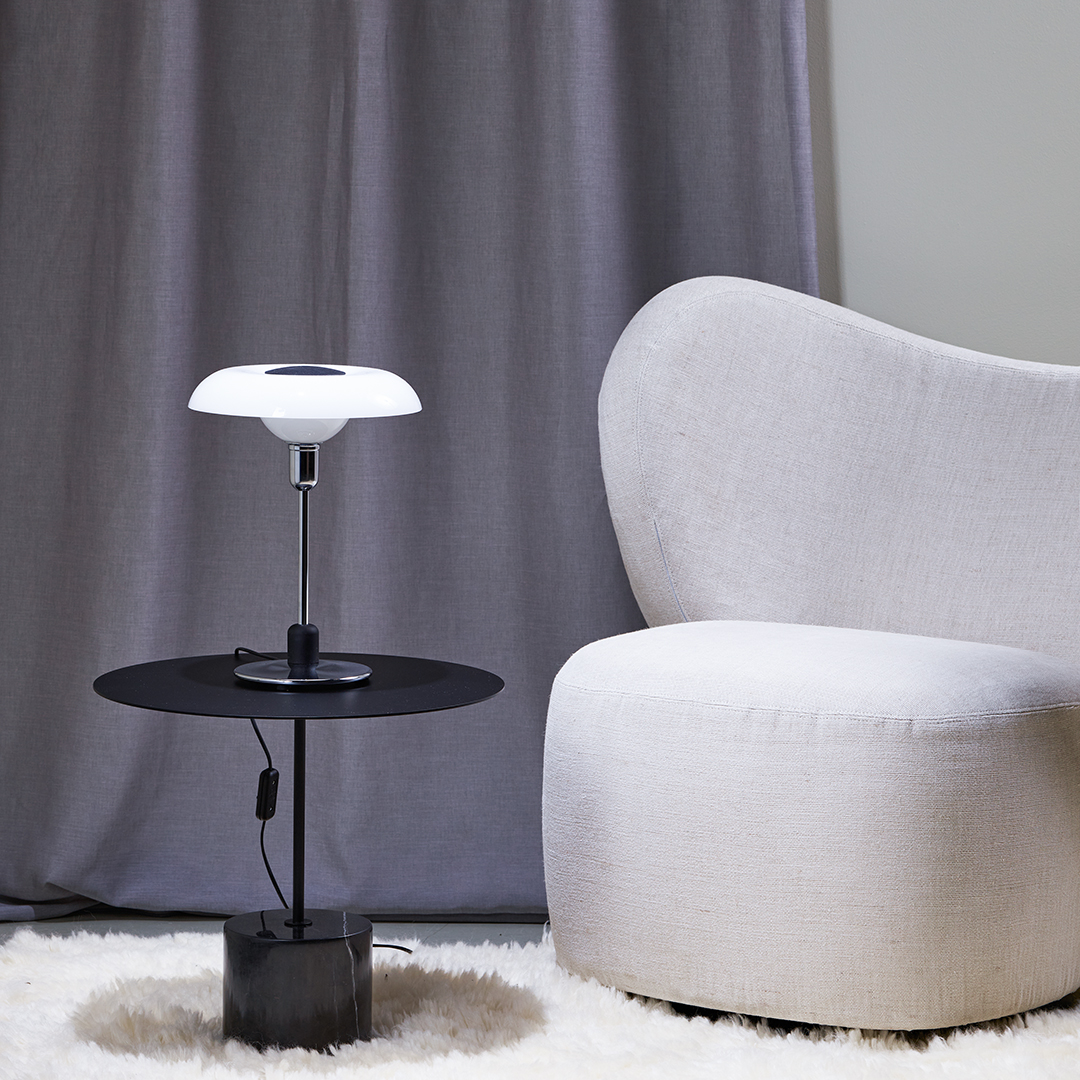Life started rather conventionally for Piet Hein. His father and mother were an engineer and an ophthalmologist, respectively. Piet Hein's childhood and adolescence in Copenhagen ended with his obtaining a general certificate from the Metropolitan Grammar School, and subsequently he took the introductory course in philosophy at the University of Copenhagen in the autumn of 1924.

Afterwards the life of the now 19 year old Piet Hein became anything but regular. For a time he left the university in order to attend private art schools in the capital, and he spent some time as a student at the Royal Swedish Academy of Fine Arts in Stockholm as well. He came back to Denmark and apparently he changed his course again studying philosophy and theoretical physics at the University of Copenhagen, at the Technological University and at Niels Bohr Institute.
Perhaps this accounts for Piet Hein's fundamental distinction. For him there was no unbridgeable gap between the subjectivity of the fine arts and the objective world of science.
Throughout life he grew and expressed himself both as an artist and a scientist. He has been called a universalist. In that way a spiritual affinity existed between him and the Renaissance ideal - a modern variant of Leonardo da Vinci. However, contrary to the historical ideals, in Piet Hein's works is found an easily recognizable element whether it is a matter of scientific publications, essays, poetry or architecture. The special Piet Hein touch is the superiority of the form in relation to the objectives, the medium and - for that matter - the contents.
Piet Hein's world is almost the epitome of design. His recognisable style of language and material turns design into art. He belonged to the generation which also included some of the cultural leftists of the interwar years and later on those of the flower power generation, but he chose to go neither with nor against the current. Piet Hein chose his own course. The headlines of this course were only few, and they accompanied him in a poetic and architectural production for almost sixty years. Were his production to be collected under one single subject heading, the word harmony would probably be the most adequate. In 1944 Piet Hein explained his working method in this way :"Art is solution to problems which cannot be formulated clearly before they have been solved". Other people have very aptly called his working method architectural poetic design.
Harmonic forming in words: Grooks
Now and then in the 1930s the Danes might read some short poems by Piet Hein in the daily newspaper Politiken. They were printed under the headline "From day to day" and both the newspaper and the author saw them as poetic comments on small and great occurrences in everyday life. From 1940 the form grew more firm. Piet Hein's special grooks were created, the poet's alias being Kumbel Kumbell. Many people have tried to define what a grook actually is. It may be said that most grooks say what anybody may think out themselves, but they put pertinent new perspectives on everyday observations which present the reader with small instructions in the finest of all the arts: the art of living. Thus everybody recognizes themselves in Kumbel's universe.
From 1940 to 1963 twenty volumes of original collections of grooks were published. One of the first grooks - "Taking fun as simply fun" - remained one of the most famous. Piet Hein called it pedagogical grook and mentioned it afterwards in other connections as a kind of key to all the other grooks.
The poet Kumbel Kumbell had his poems translated into all kinds of different languages, more than one and a half million copies have been printed. The small grooks belong to everybody, exactly as was Piet Hein's original intention.
They are meant to be used and the author did not hold back from taking part in initiatives which might result in further distribution. Small porcelain butter platters with a grook painted on them became famous. He was also responsible for translations of entire collections of grooks into English as well as Esperanto.
Harmonic forming in mathematics: The Superellipse
Parallel to his poetic work, Piet Hein decided to find an absolutely harmonic physical design. With mathematical intuition he first found the form and then explained it afterwards. His superellipse was to solve the double contrast between the circle and the square and that of the ellipse and the rectangle. By means of mathematics he found a harmonic geometrical figure which was first used on a large scale in connection with the solution to a town planning problem in Stockholm. In a rectangular square, 200 metres long, in Stockholm's centre two motorways were to meet in a gigantic roundabout. The solution was the application of the superellipse to both square and roundabout at the new Sergels Torg. Later on the superellipse has been used in Canada, France, Japan, the US and Mexico in connection with the solution of as different constructions as residential areas and sports centres for example the Olympic Stadium in Mexico City.
Within furniture design the superellipse also became the solution to various problems - especially in relation to Piet Hein's design of tabletops the superellipse became popular.
In a three-dimensional version the superellipse became the superegg which has been used for metal versions of various board games, superegg drink coolers and the anti-stress ball.
Especially the latter reached an enormous distribution in the 1970s. In addition to his work with the development of the superellipse Piet Hein has executed a great many other design commissions, from board games in wood to the elegant Sinus lamp.
The belief in the intellectual man
In 1940 Piet Hein became the president of the association Frisindet Kulturkamp (Liberal Cultural Action). This was the first visible step in his effort towards globalism and harmony.
This effort is probably best illustrated by his presidency in 1948-1949 of the Danish branch of World Movement for World Federal Government. Here people were seriously working for the solution of the worlds’ overall problems and conflicts through idealistic scientific work on a world-wide basis which was to be achieved by bringing together intellectuals from all over the world.
Later on for Piet Hein it became a question of propagating the international artificial language Esperanto and memberships of the committees of Open Door International, Humanistisk Forbund (Humanistic Union), Ligaen for Tolerance (The League for Tolerance) and for example International Pen.
Furthermore, it was characteristic of Piet Hein that he deliberately sought the personal acquaintance of the intellectual elite of his time at international level. From his youth at the Technological University in Copenhagen he knew the physicist Niels Bohr. Through him Piet Hein also sought the acquaintance of Albert Einstein and Charles Chaplin after the Second World War. A close friendship developed between these people and in several essays Piet Hein has described how he was inspired by this.
National and international recognition
Piet Hein is among the Danes which have received the most awards in the twentieth century. In Denmark he has received the Aarestrup-medal ( 1969), the Industrial Design-prize (1971), the Storm Petersen-prize (1978), the Medal Ingenio et Arti (1985), the annual prize of Danish Design Council (1989) and the Tietgen Medal (1990) as well as honorary memberships of the Students' Association (1970), the Royal Copenhagen Shooting Society (1978), Det Danske Broderskab (the Danish Guild) (1978).
Of international distinctions can be mentioned Alexander Graham Bell Silver Bell (1968), Die gute Industrieform (1971), Doctor of Human Letters at Yale University (1972), Huitième Salon Internationale du Lumiaire (1973) and Nobel Lecturer (1983).
Piet Hein is the internationally best known Dane in our century next to the physicist Niels Bohr and the author Karen Blixen.




